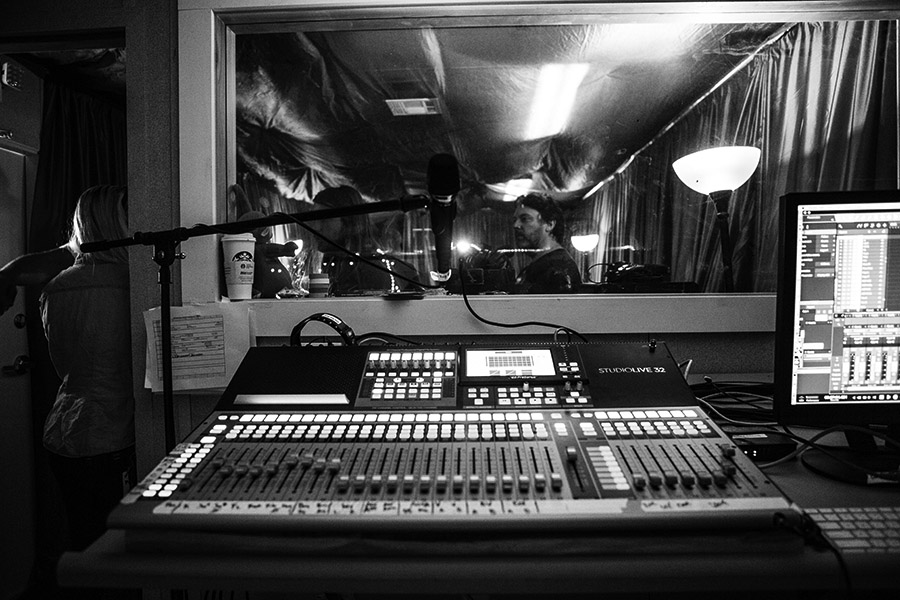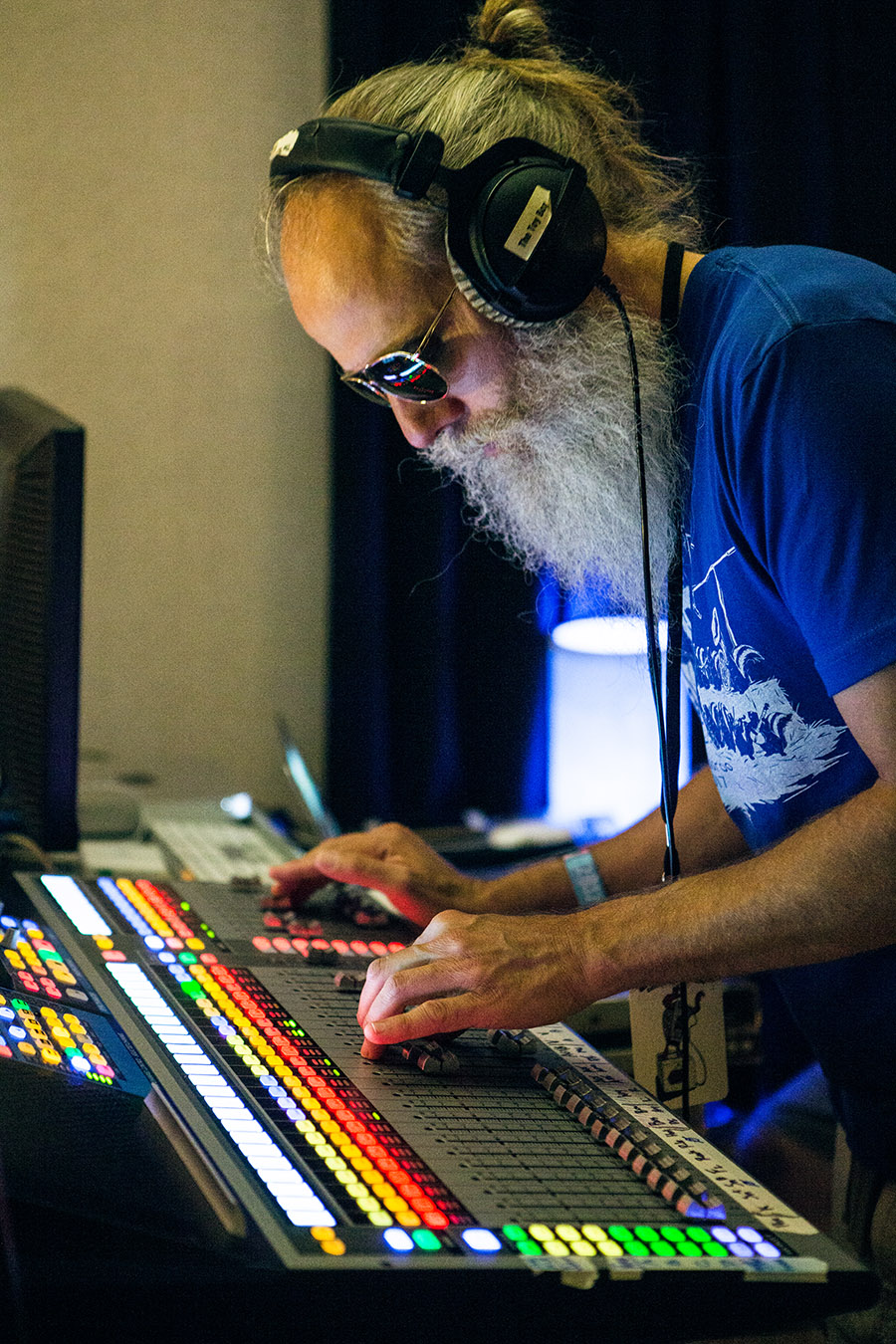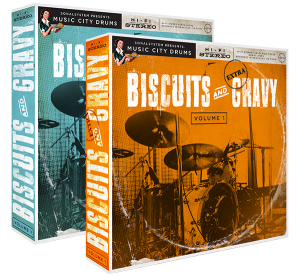Category Archives: Studio One
Hay Bale Studio Relies on StudioLive 32 and Studio One at Bonnaroo
Most of time, you can find Elijah “Lij” Shaw at his Toy Box Studios in Nashville,
where the Grammy Award winner engineers and produces projects in a wide variety of musical genres. But every year, when the Bonnaroo Music and Arts Festival rolls around, Shaw and his team decamp for Manchester, home of the festival. There, behind the main stage, they soundproof their double-wide mobile recording trailer with 500 hay bales.
In this once-a-year Hay Bale Studio at Brigadoon—er, Bonnaroo—Shaw and his team record dozens of bands that will appear at the festival. The performances are fed to more than 40 radio markets around the USA.
For the 2017 Bonnaroo, Hay Bale Studio offered more capabilities than ever before, as Shaw mixed on the new PreSonus StudioLive 32 Series III digital console/recorder, while his team captured the tracks and main mix in PreSonus’ popular Studio One 3 Professional DAW.
“The StudioLive 32 allowed us to bring in all 24 inputs from the recording floor, so we could record a full band. We’re recording in multitrack to Studio One using the console’s AVB audio interface, which can send and return up to 55 streams over one CAT5 Ethernet cable,” says Shaw.
Shaw mixes live while the band is performing, a job made much easier by the StudioLive 32 Fat Channel signal-processing section’s customizable user interface. “I’ve got compressors and EQ on every channel,” Shaw specifies, “and the customizable Fat Channel lets me create my own layout so I can quickly access the processing I want when mixing. I can bring in four onboard effects processors for reverb and delay, and I also patch in my outboard spring reverb. I use Tap Tempo on the mixer to ensure the timing of the delay effects works with what the band is playing.”
PreSonus’ FlexMix feature also has proven useful. “I choose a FlexMix, and the entire mixer configuration changes and shows me what’s going on with that FlexMix,” instructs Shaw. Using the StudioLive 32’s aux sends, Shaw and team send four custom headphone cue mixes. “We send the cue mixes to the PreSonus HP4, which is a great, simple 4-channel headphone box that is really loud,” he avers. “We have two people with iPads running UC Surface software to control the monitor mixes.”
Main engineer Michael Hardesty also is equipped with UC Surface but he’s running it on a laptop. “Anything Lij can do on the mixer, I can do just as well in the software. My main goal is to set preamps and compressors and do the gain staging so I can get the multitrack feeds recorded properly in Studio One. I am also taking a print of the mix but generally I’m working with individual tracks. I also help with headphone mixes,” Hardesty observes.
With UC Surface, it’s possible to control the mixer from multiple devices at the same time. “That means you can give people different responsibilities,” Hardesty explains. “You also can lock out functions on particular devices; the iPad guys on the recording floor can only control the aux sends for the headphone mixes, while my laptop has complete control of the StudioLive 32.”
The live stereo mix goes straight to mastering engineer Joe Hutchinson. “Joe makes the radio mix sound fantastic,” enthuses Shaw. “He also uses Studio One to capture the performance in stereo. So we’re capturing bands through the StudioLive 32, mixing and mastering, and putting it out to more than 40 radio markets—all within an hour of each performance, with two or three songs for each band every hour.”

Thanks to the feature-packed, versatile StudioLive 32 and the power and speed of Studio One, Hay Bale Studio had entirely new capabilities at the 2017 Bonnaroo. “The customizable mixing surface, plenty of processing, wireless remote control, recording features, and ease of use let us do things we could never do at a dozen previous Bonnaroos,” confirms Shaw, “and it all sounded great. “We loved using the StudioLive 32, and we’re very happy with Studio One. Bonnaroo is a highlight of our year, and PreSonus helped make it extra special this year. We hope you’ll visit our site and check out some of the recordings!”
Watch Lij demo and show off their StudioLive 32 here:
For more information about Hay Bale Studio, please visit www.thetoyboxstudio.com/haybalestudio
Listen to their latest podcast from Bonnaroo HERE!
For more information about PreSonus, the StudioLive 32 console/recorder, Studio One 3 DAW, and the HD4 headphone amplifier, please visit www.presonus.com.
Photography provided by Anthony Matula with MA2LA Design.
Time to Get Reel—Softube Tape for Studio One now Available
 Time to get reel! Tape is now available at shop.presonus.com
Time to get reel! Tape is now available at shop.presonus.com
Softube’s Tape plug-in adds cohesion and weight to your mixes. But Tape goes far beyond your average tape machine emulation. It includes three distinctly different tape machine types, and it offers the ease of use and low CPU strain that today’s music creators rightfully expect.
Even in this day and age, it’s common practice for computer-based professional studios to run their mixes through at least one generation of analog tape. Why? Because even when used subtly, analog tape has a smoothing effect and adds cohesion and weight to a mix—it takes the recording from a collection of individual tracks into a song where everything is connected and works together. With Softube’s Tape plug-in, you can have all that and more.
Three Machines in One
Tape includes three different tape machine types in one plug-in. Type A is based on a classic Swiss high-end reel-to-reel machine, known and loved for its precision and linearity. Type B is much more colorful—it’s a transformer based machine which adds extra weight and cream to the low end. Lastly, Type C is based on a British tape machine with a distinct vintage vibe.
Ease of Use
Select your favorite tape machine Type, and adjust the Amount knob to taste. In most cases, that’s all you need to do to soak your tracks in analog tape sweetness. Easier still, load up one of the included presets, made by award winning engineers such as Joe Chiccarelli (Beck, U2, Strokes) and Howard Willing (Smashing Pumpkins, Sheryl Crow, Kris Kristofferson).
But Wait, There’s More
Feeling tweaky? Why not start by trying the different tape speed settings—you’ll find that the slower the tape speed, the more pronounced is the so-called tape head bump, which adds low end to the mix. Or open the Remote Control panel where you can control the selected tape machine’s speed stability, crosstalk amount and several other tape-a-licious features.
Dense Sound, Light on CPU
Add a single instance of Tape on your master bus to emulate what most computer based studios do today—mix in the computer, then mix down to a stereo tape machine—or go vintage style by adding Tape to every single track in your mix. Yes, your computer will be able to handle it. As most Softube plug-ins, Tape is uniquely light on your computer’s processor.
Extras for Studio One Users
If you run PreSonus Studio One, you can not only use Tape as a standard plug-in—Adding Tape to your MixFX slot gives you Tape Multitrack. Tape Multitrack includes all the goodies of Tape, but in addition, you get selectable crosstalk between each individual track—and you can easily control the Tape Multitrack settings from a single interface. The Tape and Tape Multitrack license is one and the same. This means that if you’re not a Studio One user but at some future point decide to switch to it, you will already have Tape Multitrack installed, licensed and ready to go.
In Short
- Realistic analog tape sound
- Three tape machine types included
- Easy to use
- Low CPU usage
- Includes Tape Multitrack which can be used in the MixFX slot of Presonus Studio One—adding individual channel crosstalk and single interface control of all tracks
Click here to get Tape from shop.presonus.com!
Nikola Jeremic on Composing for Starpoint Gemini Warlords in Studio One
[Nikola Jeremic is a longtime PreSonus user, fan, and all-around good friend to the company. He’s written outstanding blog pieces for us in the past, and this is no exception! Today he sheds some light on the oft-misunderstood process of music and audio for computer games, in particular, the just-released science fiction epic “Starpoint Gemini Warlords.”]
How is doing music for games different than doing music for film or TV? What features in Studio One make it particularly well-suited for this application? 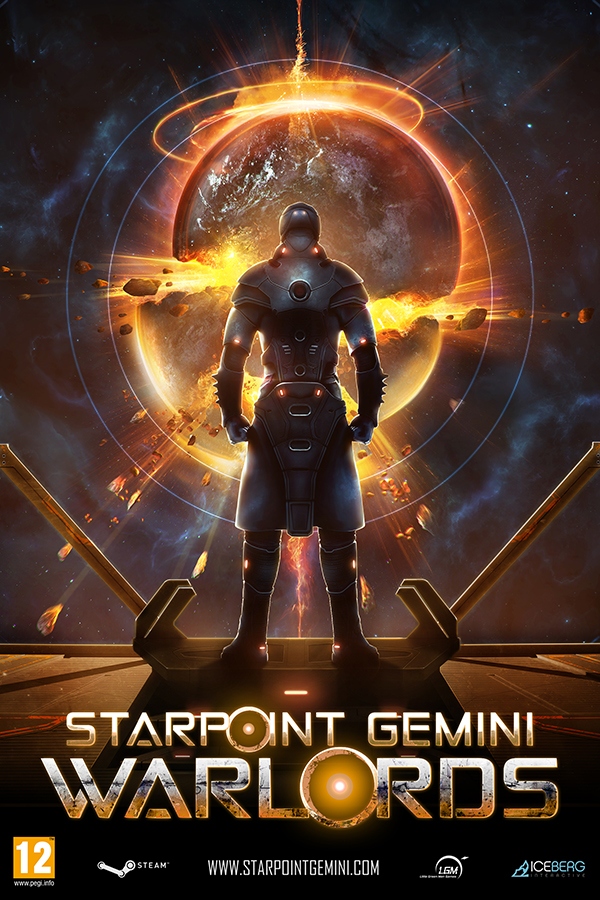
Doing music for games is technically a completely different process than composing for film or TV, because the music in video games is non-linear and interactive, unlike on films and TV. When you compose a cue for film or TV series, you are limited to the timeline of that particular scene, and you have to sync everything to fit in that particular timeline. In the game, the music needs to follow the decisions of the player and fit itself to the various situations the players will get into. That is why I compose a cue for a game in segments. In other words, I create a piece of music that can be divided into looped 8-16 bars parts that can be interchanged inside the audio middleware and each cue has a short ending stinger that can be triggered at any point to end the music cue. This idea is best applied to big action sequences and boss fights. When it comes to ambient atmospheric music, it’s fairly similar, but sometimes it’s not needed to be looped, and you can just transition from one ambient track to another, because I usually compose them in the same key, or I at least make them start and end on the same note for easier transition. That’s the approach I used for Starpoint Gemini Warlords for example.
You’ve been using Studio One for a long time. What are some of the more recent features that you found yourself using during the scoring of Starpoint Gemini Warlords?
Scratch Pads are hands down THE BEST idea ever! I love having the option of being free to experiment and change the arrangement of a cue in a single project that’s opened. It is very useful when I want to create different versions of one track to test how it sounds in different variations. I also love the fact that no matter how many scratch pads you have opened, everything is mixed in the same mix window, so I can bounce different versions very easily and quickly send them off to the developer for listening. I have to say that Studio One Mixer is absolutely the finest and probably the most respected mixing engine out there today. I have a lot of DAWs that I use for composing when collaborating with other people on projects, but I ALWAYS mix my tracks in Studio One. Project page is also awesome, especially when I need to deliver a big amount of mastered tracks to a client and I need to make sure they all sound the same and have the same levels. It’s just amazing, and the fact that I can quickly take care of meta-tags and add album art cover is really cool. The official soundtrack for Starpoint Gemini Warlords is being prepared in Project page, and it makes my life a whole lot easier. I also love the fact that it has all the needed metering in a single window, so I don’t have to load other plugins and use up my CPU. Bouncing in place and converting tracks in project pool is also a feature I use a lot. Creating FX chains with various plugins has made my mixing and sound designing process lightspeed faster, because I can always recall a preset I have created and use it over and over again no matter what plugins I have in the chain. Mojito is still my favorite go-to synth for bass lines. I generally love the sleek and clean look of Studio One interface and its plugins, because it makes my job a lost faster and easier to do without the need to think about “ooh what does this button do?” or spend a lot of time in sub-menus to find the option I need.
Do you use the Notion integration?
Yes I do. Not always, but I most of the time when I am working on piano and orchestral pieces, I always check my score sheet with Notion. What I’d love to see in the future is having Notion editor as an actual part of Studio One Pro. For example, when you open up a midi editor, you can also switch to Notion editor in the same window and tweak the notes on the staff.
Does your score consist of recordings of live instruments or are you using virtual instruments exclusively? If so, which ones?
The score for Starpoint Gemini Warlords consists of both virtual and live instruments. All of the guitar and bass parts are recorded via my FireStudio Project interface, and I also recorded my external hardware synths through FireStudio. This is mostly synth-oriented soundtrack that pays the homage to some of our favorite games and sci-fi franchises. My main synths here were my hardware synths Yamaha DX7 and KORG Volca Bass and Volca Keys, and all of them were processed through my guitar pedals, but regarding the software synths, I used Arturia V collection (mostly MiniMoog V, CS-80 V, ARP 2600 V, and Modular V) and U-He Zebra 2. I also used Mojito for basses and Mai Tai for some pad and drone sounds that were later processed via different FX plugins.
As Starpoint Gemini Warlords is clearly a Space Opera of sorts, do you take any inspiration from John Williams’ use of leitmotif in Star Wars? Any other musical influences you’d care to talk about?
What I love about Little Green Men studio (the developers of the game) is that it’s a group of fanboys and fangirls and it was a lot of fun at brainstorming meetings regarding the soundtrack for the game. Everybody was into sci-fi music and everyone has their own favorite franchises, so I had to do a lot of research and take a listen of various sci-fi game and film soundtracks. There were no traditional leitmotifs for characters, instead we decided to represent each sector in the game with a different melodic theme based on what usually goes down there, so for example more friendly sectors have some light evocative music, alien sectors are more mysterious and feature elven type of vocals and exotic woodwind instruments, while pirate and outlaw sectors are very dark and aggressive in sounds. The biggest inspiration came from video game soundtracks such as Homeworld, EvE Online (I’d love to score that one in the future), Mass Effect, Deus Ex The Human Revolution, and Battlestar Galactica TV series.
Any advice to share for musicians and producers who want to get into game audio or music but don’t know where to start? 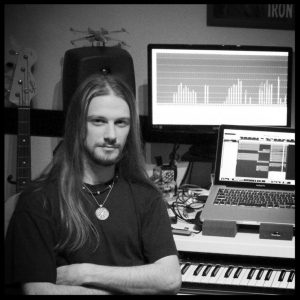
First thing I suggest you do is to join audio societies such as AES (Audio Engineering Society), G.A.N.G. (Game Audio Network Guild), and visit conferences such as GDC (Game Developers Conference) and GamesoundCon. You will meet a lot of people from the industry, and they will all be more than happy to share knowledge and forward you to other people as well. Read books on game audio from publishers like Focal Press for example, I know that helped me a lot. You can always look for some smaller mobile gaming developers out there in your local communities and get in touch with them as well. And the most important thing of all is to learn your craft and learn it good. Don’t get overwhelmed by this or that plugin that’s newest on the market or whatever. Get a set of tools that you like and learn them well inside and out. You will be amazed by how easily you can get great results with bundled plugins that come with your DAW. I still use my Studio One Pro EQ and Compressor most of the time for sampled stuff. Create your own sounds from the stuff that you have. A developer will always learn to appreciate more the fact that you took your sweet time to create something original that’s only for them, than sending them something created with commercial instruments libraries that everyone uses.
Links:
Studio One 3.5 – What’s New and Release Notes
Studio One 3.5 is here! This is a free update for owners of Studio One 3.x. Click “Check for updates” in Studio One’s start page to get it!
Full release notes follow. For a less-technical overview, check out the video below or visit our What’s New page here.
IMPORTANT: This version introduces an updated file format for Songs and Projects for faster
Save / Auto-Save. Files created in 3.5 will no longer open in previous versions of Studio One.
Make sure to work from copies of your existing songs created in Studio One 3.3.4 or older if
you like to continue working with a previous version as well.
______________________________
New features and improvements:
Audio Engine and Performance
Flexible Dropout Protection
• Native Low Latency Monitoring
• Low-latency virtual instrument monitoring
• Multi-processing enhancements for improved CPU balancing
Arrangement and Automation
New shortcut to “Select all Muted Events”
• Copy/Paste Events also copies Layer data
• Import tempo map, time signatures and markers when dragging MIDI file to
Arrangement [Cmd+Alt]
• Maximum Track Delay increased to 1,000ms
• New Track command: “Apply Track Names to Channels”
• “Cursor follows Edit Position” now limited to manually selected events or
ranges
• Batch renaming events always adds leading zero
• Event Inspector: Multi-editing for Event Start and End
• Arranger Track: Move Arranger Section only [Cmd+Alt]
• “Bounce to new Track” now preserves output routing
• Complete Show/Hide for Automation
• Automation Lanes on Instrument Track
• Improved time-stretching accuracy. “Audio Bend” mode now obsolete.
Mixer (Console)
• Mixer Undo
• Remote control of StudioLive Series III Fat Channel and mic pre-amps
• New command: “Remove Track Automation” removes all automation data
• Visual plug-in bypass state in console
Instruments and Plug-ins
Fat Channel XT
• Adjustable level range for Spectrum Meter (all modes)
• Updated micro-views for Spectrum Meter
• 12th octave mode in Spectrum Meter (incl. keyboard scale)
• Loudness Meter now EBU R-128 compliant
• [macOS] MIDI input for AU plug-ins
• Event FX window follows Event selection
• [macOS] Preset list support for AU instruments/plug-ins
• FX Routing: Splitter can now be moved freely
Music Editor
Unlimited number of controller lanes
• Option to “Resize adjacent Events” (multiple overlapping) [Alt]
Score Editing with Notion
• Send audio or note data to existing song
• Tempo map import (drag & drop)
• Other improvements within Notion (ReWire handling, Studio One application
launcher, and more)
Project Page
• Independent Track Markers
• Flexible Loudness Detection options
• New Loudness Meter
• New Spectrum Meter
• DDP import
• Improved meta-data editing
• Pool in Project Page
• New Bounce Track option
• Dynamic search for Songs in Project (improved compatibility)
• Faster rendering (if a Song is used multiple times)
• New command “Bounce Track” (includes Track inserts, not Master FX)
• Extended “Add to Project” menu
• Improved ID-tag export (adding Composer and ISRC)
• User interface improvements
• New “Split Track” and “Split at Cursor” commands + shortcuts
Browser
• New “Construction Kits” node in Loop Browser
• Search fields in Browser and Mixer reset on close
Hardware and Multitouch
• Dual-screen support (Raven MTi)
• Higher MIDI update rate for control surfaces
General
• Delete unsaved files and folders when closing new song w/o saving
• Warnings shown when errors occur while exporting mix in real-time
• Updated FLAC codec (better performance)
• Improved save and auto-save performance for Songs and Projects
• [macOS] Independent recording and playback devices
• Extended Bounce and Export options
• Support for 176.4 kHz sample rate in audio export
• [Developers] Gain Reduction API for VST2
—————————————————————————–
—————————————————————————–
The following issues have been fixed:
• “Invert Selection” didn’t restrict range when Scratch Pads exist
• Arranger Track section copy doesn’t work backwards on timeline
• Pre-recorded notes overlapping loop start are doubled after loop recording
• Fade handles are hard to reach when event volume is not at max.
• Overlapping audio events with fade-in are out of sync
• Crash when recording MIDI in loop
• Play Start Marker affects bounce between markers
• No “Paste” in context menu for Tempo Track
• [ARA] Events show wrong content when split after analysis with Melodyne 4.1
• Crash with NI Komplete Audio 6 when changing sample rate
• Audio time-stretch with bend markers is not exact
• Chorder: Crash when transposing out of range with automation
• Install from “Cloud” inside Studio One 3.3 hangs
• Plug-in menu search box loses focus
• Command for “Show in Finder/Explorer” not working for Macros
• Can’t drag more than one Instrument from Browser
• [macOS] Newly created folders not visible in Browser
• “Copy external files” not working for multiple opened songs
• [macOS] Studio One language changes after re-install
• Crash while closing all songs
• Musicloop exports without audio when routed to outputs other than Main
• Wrong-placed note events in loop recording
• Sustain pedal with latency writes wrong data
• Global plug-in bypass not functional if any plug-in in Chain is disabled
• Spectrum Meter curve has offset depending on FFT size
• Channel buttons missing on Multi-Instrument channels
• [macOS] AU Instruments saved in OFF status load back empty
• [macOS] Kontakt AU not showing all available outputs
• Global deactivate FX not working with disabled tracks
• Inconsistent behavior when chasing long notes
• [Impact] Wrong channel order when moving sub outs in mixer
• Wrong channel order after transform to audio and back
• Wrong channel order between folders and busses
• Wrong channel order when dragging instrument to track
• Studio One will not export note data to Notion if the file has an apostrophe in the name
• [macOS] Crash on start with OSX 10.11 El Capitan
• [macOS] AU presets always marked as edited
• |macOS] Invisible scroll bars in help window
• Offset when dragging audio file with bend-markers to Instrument Track
• Notes are transposed one octave when dragging to new Instrument Track via
Melodyne
Five New Sample Packs from Sample Tekk Now Available for Studio One
Click here to browse and shop!
We’ve got five new amazing sample sets from Sample Tekk that we’ve just added to shop.presonus.com. These packs are compatible with Studio One Prime, Artist, and Professional (version 3.3.4 and higher).
The White Grand
Sample Tekk recorded The White Grand with the finest equipment available, using a specially-designed digital recording technique to give you unequaled performance and sound. Prepare to explore a tactile and expressive feast, not heard in many sampled pianos today.
INIL Choir
Get the crazy ethereal choir sounds of “I’m Not In Love” by 10CC with INIL Choir! These choirs are unique—the combination of voices and the way they were produced have given them a sound that’s truly one of a kind. Now, SampleTekk, in cooperation with Eric Stewart of 10CC are very proud to release of The INIL Choir, thus taking one of the most famous analog samples into the digital era.
Tubed Keys
Great-sounding Rhodes for Studio One, recorded through a Fender Twin as the Rhodes was intended to be heard. Sample Tekk didn’t go for 80s sheen and gloss with lots of tines and overtones. The Tubed Rhodes is more representative the 70’s: a gritty, hard-core rythm’n’blues kind of sound.
The Rain Piano
Somber sounds of a piano that has been left out in the rain and elements. Musical, but with extra overtones and character. The Rain Piano has become a kind of a synonym for character pianos. It has been used and is still used on countless productions where you want something that adds a different flavor rather than using a normal piano.
Singularis
Old School piano recorded with vintage mics, tape, and preamps. In glorious MONO!
Click here to browse and shop!
Biscuits and Gravy Drum Loops now Available for Studio One, Extra Gravy also Available
Click here to check them out at shop.presonus.com
Meticulously recorded, delicately produced, and packed full of flavor in Nashville, Tennessee, these audio loops were specifically recorded with both character and attitude set to inspire and move you without the limitation of genres. Inside you’ll find a variety of grooves with that punch and feel you’ve been looking for.
Music City Drums Vol. 1 “Biscuits and Gravy” is available in 2 forms:
1. Biscuits and Gravy
- 24/441 stereo audioloops
- over 450 production ready audio loops
- tempo variations from 70 BPM to 130 BPM
- 5 different kits recorded
2. Biscuits and Extra Gravy
- 24/441 stereo and multitrack audioloops
- over 3,600 production ready audio loops
- tempo variations from 70 BPM to 130 BPM
- 5 different kits recorded
PreSonus Symphonic Orchestra Available Now!
PreSonus Symphonic Orchestra is more than just another sample library. It combines a complete symphonic orchestra instrument library with ready-to-use Studio One Musicloops for lightning-fast arranging and production in an attractively-priced bundle. The instruments not only comprise a full symphony orchestra, but also a contemporary strings library that has a different ambient character to choose from. More than 1,200 Musicloops allow for creating full arrangements on the fly while retaining complete control over tempo, key, chords and sound character. Tight integration with Studio One makes production work fun again. PreSonus Symphonic Orchestra is compatible with Studio One Prime, Artist and Professional (version 3.3.4 or higher), making it an ideal combination for aspiring composers and arrangers, as well as anyone learning or teaching music theory.
With more than 1,200 royalty-free loops from 29 unique Construction Kits, PreSonus Symphonic Orchestra is a powerful composition and arranging tool even for someone who doesn’t have classical training or doesn’t play a keyboard instrument. Produced by professional orchestral composers, these Construction Kits cover a wide range of styles and instrument arrangements: Classical, Soundtrack, Jazz, Pop, Hip-Hop, House, Disco, and more.
Click here to check it out at shop.presonus.com!
Highlights:
- More than 14 GB of samples with over 300 instrument presets
- Includes more than 1,200 royalty-free Musicloops for quick and easy arranging
- Multiple key-switch articulations per instrument
- Expression control and custom legato scripting
- Deep integration with Studio One: key-switch articulation names in Music Editor; searchable preset database in Instrument Browser, new Construction Kit category in Loop Browser.
Three Sound Sets contain PresenceXT instruments, Studio One Musicloops and audio demos.
- PSO Classic Orchestra (6 GB)
- PSO Contemporary Strings (6.44 GB)
- PSO Musicloops (1.9 GB)
Classic Orchestra Instruments: Cello, Cello Section, Double Bass Section, Harp, Viola, Viola Section, Violin, Violin Section, French Horn, French Horn Section, Orchestral Tuba, Piccolo Trumpet, Tenor Trombone, Trombone Section, Trumpet, Trumpet Section, Alto Flute, Bass Clarinet, Bass Flute, Bassoon, Clarinet, Clarinet Section, Contrabassoon, English Horn, Flute, Flute Section, Oboe, Piccolo, Classic Choir (multiple articulations and fx), Marimba, Vibraphone, Xylophone, Bamboo-Chimes, Cowbell, Crotales, Glockenspiel, Shellchimes, Triangle, Tubular Bells, Windchimes, Cymbals (Set), Japanese Bowls, Orchestral Gongs, Thai Gongs, Castanets, Claves, Tambourine, Temple Blocks, Gran Cassa, Snare, Timpani, Orchestral Effects (multiple instruments)
Contemporary Strings Instruments: Violin Section, Viola Section, Cello Section, Bass Section, Big String Section ((all: KS and single articulation Presets)
Articulations (availability and mapping varies across instruments)
Strings: Sustained Notes f & p, Con Sordino, Short detaché 2x, Pizzicato 2x, Col Legno 2x, Tremolo f, Tremolo pp, Crescendo, Cresc. Tremolo, Trill, Glissando, Grace Notes, Short chords, Arpeggios.
Brass: Sustained Notes f & p, Staccato 2x, Half & Whole Tone Trill, Crescendo, Runs.
Woodwinds: Sustained Notes f & p, Staccato 2x, Grace Notes.
Percussion: Single Strokes, Tremolo, long/medium/short Cresc., Glissando.
Harp: Glissandi – long, medium, short / major, minor.
A Cubase User, a Logic User, and a Digital Performer user Find Common Ground in Studio One
[We recently came across a great story—three different producers, all of whom use different DAWs, needed to collaborate on a single project. They decided that Studio One offered them the best of all three worlds, and chose it for their collaborative effort. Details below courtesy of Roger Hooper, Robert Holmes, and George Napier.]

George Napier’s Studio
George Napier kicks things off by describing the task at hand, as well as the backgrounds of the collaborators.
“Robert, Roger, and I took a group of 11 executives from a 75-person tech startup into Studio A of Omega Studios for two days of team building. We needed to prepare backing tracks and beds for them to play against. Roger is a film composer, former Logic guy and current Mac-based Cubase user. Robert is a musician and games music composer and a 20 year die hard Digital Performer user who switched to Windows on DP and was not liking the experience,” says George. “I’m a composer/sound designer and a bit of a serial monogamist when it comes to DAWs. I’ve used Studio One since version 1, left it for Logic/Cubase at 2.6, and came back to try it out with the release of 3 (all on Mac). FYI: We all work together on projects for each other’s companies. This particular project was done under Robert’s company ResonantClarity.
Roger Hooper is a longtime Cubase and Logic user who was new to Studio One for this collaboration. His impressions and description of the collaborative workflow follow.
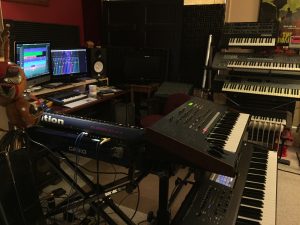
Roger Hooper’s Studio
Robert Holmes is a long-time Digital Performer user who made the switch to Studio One after a 20-year commitment to DP. He’s a self-proclaimed “old pop/rock studio guy from LA who ended up doing game scores in the golden age of adventure games.”

Robert Holmes’ Studio
“I had one interesting experience where I was mixing, and I was getting lots of crosstalk,” recalls Holmes. “And it was actually very cool from a sonic point of view, but it was making mixing a challenge. That’s when I discovered the Console Shaper had accidentally been activated on the master track somehow and was in Crosstalk mode. So YES, the crosstalk really works if you want that Gold Star Studio Wall of Sound.”Despite a lengthy relationship with Digital Performer, Holmes has taken the plunge and made the switch to Studio One as a result of his experiences in this project.
“I never looked back.”
Buy a StudioLive CS18AI, get Studio One Professional
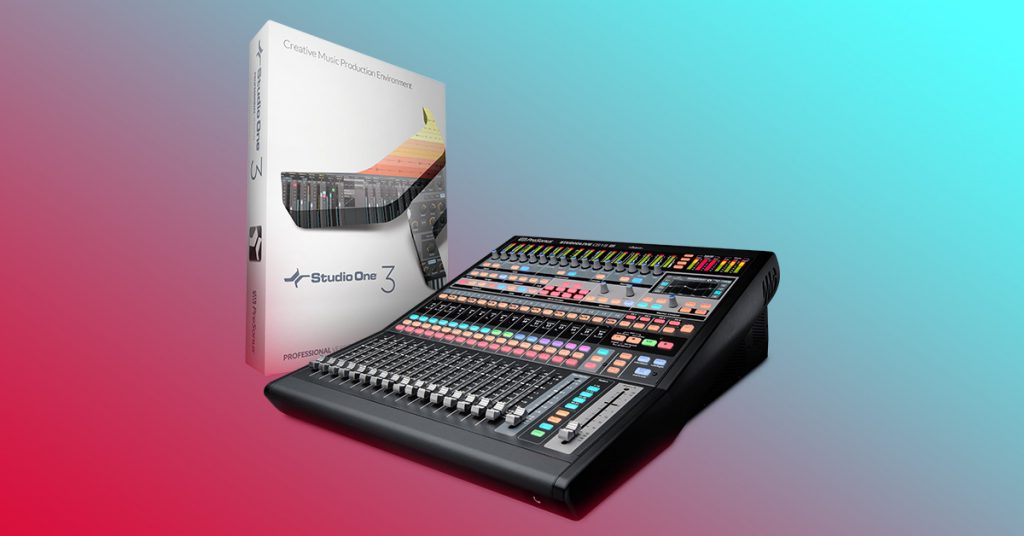
Get Studio One 3 Professional when you buy a StudioLive CS18AI
There’s no rebate forms or any of that mess—just register your CS18AI at my.presonus.com and Studio One Professional will be available in your my.presonus.com account for download!
Equipped with 100 mm, touch-sensitive, widely popular motorized faders and AVB networking, the StudioLive CS18AI control surface provides a compact, intuitive mixing solution for PreSonus StudioLive RM16AI and RM32AI rack-mount digital mixers and Studio One 3. The CS18AI connects to your network with a CAT5e or CAT6 Ethernet cable, eliminating the need for cumbersome analog or digital snakes and stage boxes, and offers a host of other useful features. It adds up to a powerful mix control system with a fast, intuitive workflow and the latest networking technology.
“Our StudioLive Active Integration mixing systems are the only solutions that allow you to customize your mixing experience to fit your individual needs. With a StudioLive RM as the mix core, you can choose to work with physical motorized faders, portable wireless iPad, a large Windows 8 touch screen, or a combination of them all.”
—Ray Tantzen, PreSonus Senior Product Manager
Take a detailed look at the CS18AI with Rick Naqvi here!
James F. Reynolds on Studio One
[This just in from James F. Reynolds, pop and dance music’s “secret weapon.” He has mixed and produced a wide range of acts including Ellie Goulding, Emeli Sande, Years and Years, Tinie Tempah, and The Saturdays. Last year he made the switch to Studio One and was kind enough to share his insights with us.]
• For what applications are you using Studio One Pro? (Example: for recording, composing, sound design, and so on; in a commercial studio, project studio, for live recording, etc.)
I use Studio One 3 Professional for mixing, production, and recording.
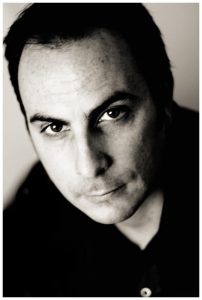
James F. Reynolds
• What led you to choose Studio One? Was it the company’s reputation, audio quality, ease of use, specific features, price, other factors?
I spent many years using a combination of Logic, Pro Tools, and Ableton Live, as they all have strengths in different areas. I had been searching for a while for a DAW that has the best of all these platforms, for example:
- The creative speed of Ableton
- The accuracy and mixing ability of Pro Tools
- The lay out and ease of use of Logic.
Last year I had quite a few producers in my studio talking about Studio One and decided to investigate further. After taking some time to get to know the program, it became apparent that this was a program that has been thought out really well and ticks the box of being a one stop shop for mixing/production and writing.
• Having used Studio One, what do you like most about it?
I have used it consistently for 5 months now and it has sped up my mixing and overall workflow. One of the best features is being able to set up a series of commands using Macros. It’s also very stable.
• What Studio One features have proven particularly useful and why?
The arranger track is very handy, as often when I am mixing a song, the label wants extended versions. The Arranger and also to try out different structures within the arrangement. This is very easy to do using the arranger as it can copy any section with all the automation related to it.
• Any user tips or tricks or interesting stories based on your experience with Studio One?
My tip is this: if you are trying Studio One out, stick with it. It’s always very difficult switching from a platform that you use day in day out for many years as everything is second nature. It takes a while to get back to this speed on a new platform but if you persevere it pays off !
• Please give me some basic background info on your career and current projects, credits, and so on.
I am mainly known as a mixer. I am currently mixing Emeli Sande and before that was mixing Ellie Goulding “Still falling for you” (U.S.A radio mix) and Kelly Clarkson. I also mix for a K Pop band called B.T.S who’s album last year broke records. I co wrote “Drinking from the bottle” with Mark Knight and Calvin Harris and Tinie Tempah. For more info, check out www.jamesfreynoldsmixing.com
• Any final comments about PreSonus and Studio One?
I am really excited about the future of Studio One and have been really encouraged by a development team that actually take on board feedback from mixers and producers and often implement ideas if they are good. This was a big frustration with other DAWs, as feedback was not listened to or acted on.
